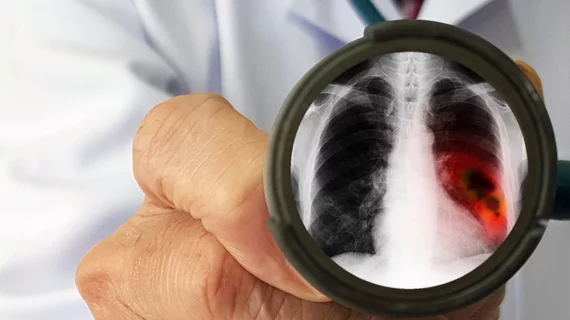1st-of-its kind study unearths factors radiology providers can modify to boost cancer screening uptake
A first-of-its kind new study examines factors radiology providers can modify to boost screening uptake.
Challenges addressing lung cancer are well-documented: Only 5% to 21% of eligible Americans undergo low-dose CT imaging. These numbers are even worse among populations that bear a disproportionate burden of lung cancer, experts detailed in JAMA Network Open [1]. Black individuals, for instance, are 16% less likely to survive five years after a diagnosis, with worse odds of receiving LDCT.
Researchers sought to better understand the environmental and psychosocial factors driving these numbers, conducting interviews and focus groups with 34 individuals eligible for screening.
“Understanding how patients make decisions to engage with lung cancer screening is critical for increasing uptake,” Jennifer Richmond, PhD, an assistant professor with the Wake Forest University School of Medicine in North Carolina, and colleagues wrote May 31. “Prior research has focused on individual-level psychosocial factors, but environmental factors (e.g., historical contexts that include experiencing racism) and modifying factors—those that can be changed to make it easier or harder to undergo screening—also likely affect screening decisions.”
Participants pinpointed historical and present-day racism as “critical factors” contributing to their mistrust of healthcare providers and avoidance of LDCT. Other dynamics such as the availability of public transportation—along with fear of a cancer diagnosis or previous negative encounters with the healthcare system—also played a part. Richmond and co-authors believe their study offers some of the “first evidence highlighting connections between racism and lung cancer screening decisions.”
Participants suggested that providers could increase trust by communicating more effectively, including avoiding the stigmatization of smoking behaviors. Building trust is crucial, with efforts to acknowledge, understand and reduce the incidence of harmful patient experiences with providers, the study noted. Richmond and co-authors also suggested building connections with the community.
“For example, researchers, patients and other community members might co-lead interventions that bring free or low-cost screening into communities through mobile units instead of relying on patients to initiate care from medical spaces that previously harmed them,” the study noted.
To address fear, providers might offer information about a patient’s unique lung cancer risk and potential screening benefits. Shared decision-making discussions could center around community cultures and patient concerns regarding how their ancestors, family and friends have “historically been treated by the healthcare system.”
“These discussions offer opportunities to understand concerns that would not ordinarily come up during a medical visit,” the authors noted. “For example, a practitioner might gain a new understanding of how a patient’s family member experienced harm after a cancer diagnosis and initiate conversations on ways to reduce the likelihood of similar harms occurring if the patient is diagnosed with lung cancer.”
Richmond and co-authors conducted the study between 2021 and 2022 using semi-structured interviews and four focus groups. All participants met U.S. Preventive Services Task Force eligibility criteria for lung cancer screening and were recruited via an online panel. Half had a household income below $20,000, with the study also highlighting cost and insurance as key barriers. Participants said they want to know potential LDCT charges upfront, coupled with info about screening accuracy and other elements of the process.
“Yet, there is widespread variation in practitioner knowledge about lung cancer screening,” the authors added. “Without such knowledge, patient-practitioner communication (a key modifying factor) may disintegrate. Novel interventions are needed to promote practitioner and patient knowledge of and meaningful communication about lung cancer screening.”
Read much more in JAMA at the link below, including a corresponding editorial [2].

